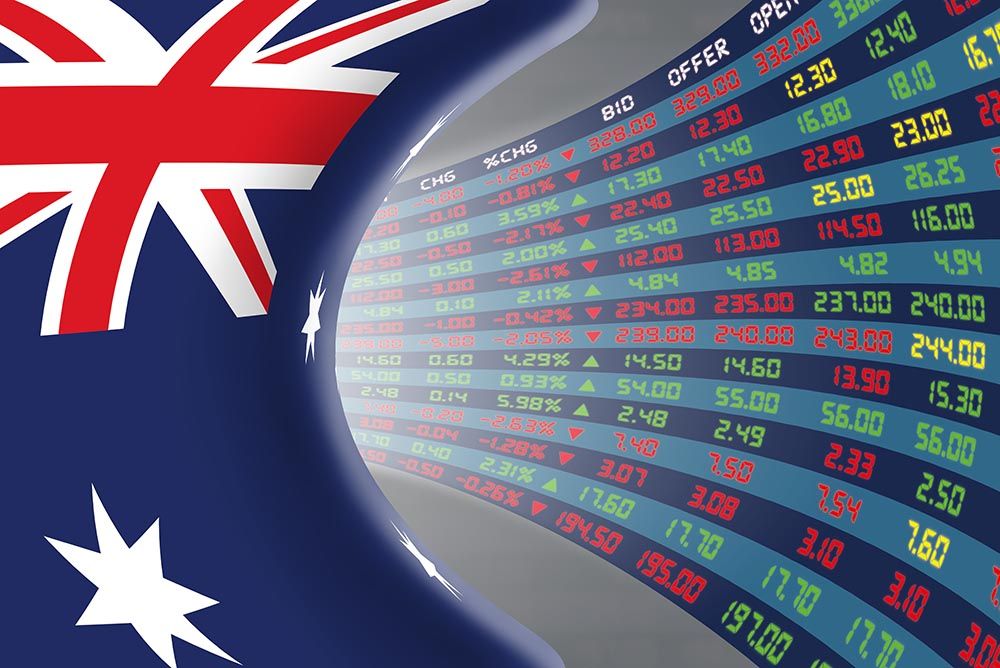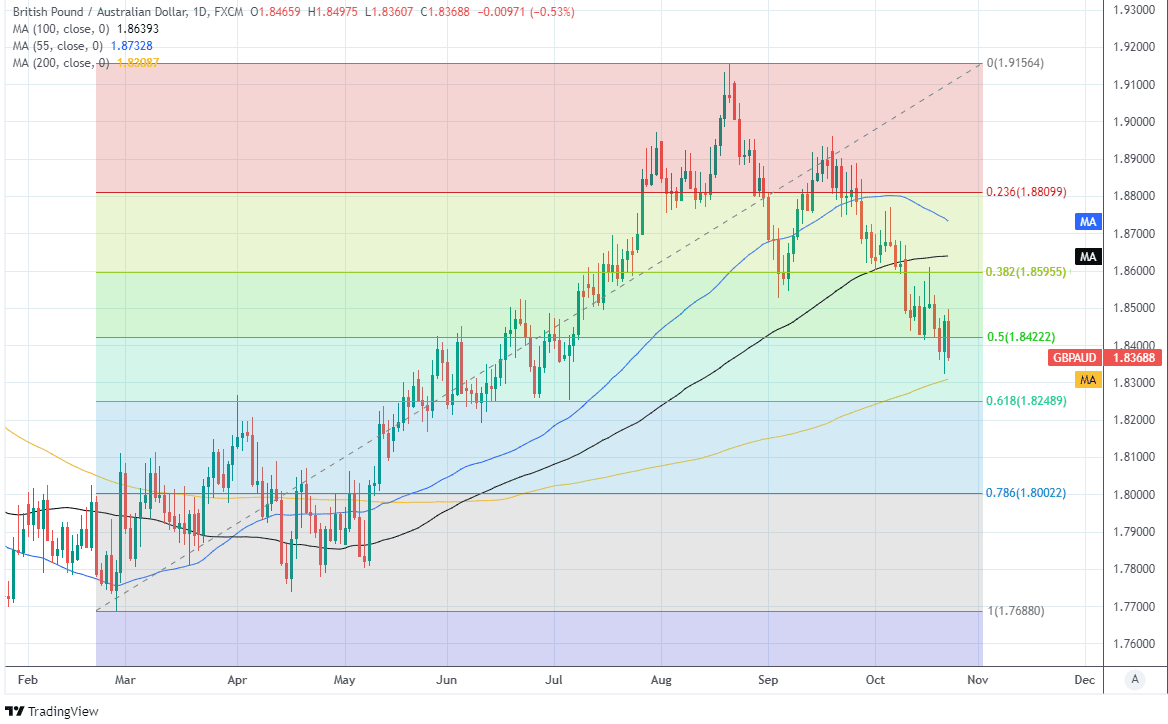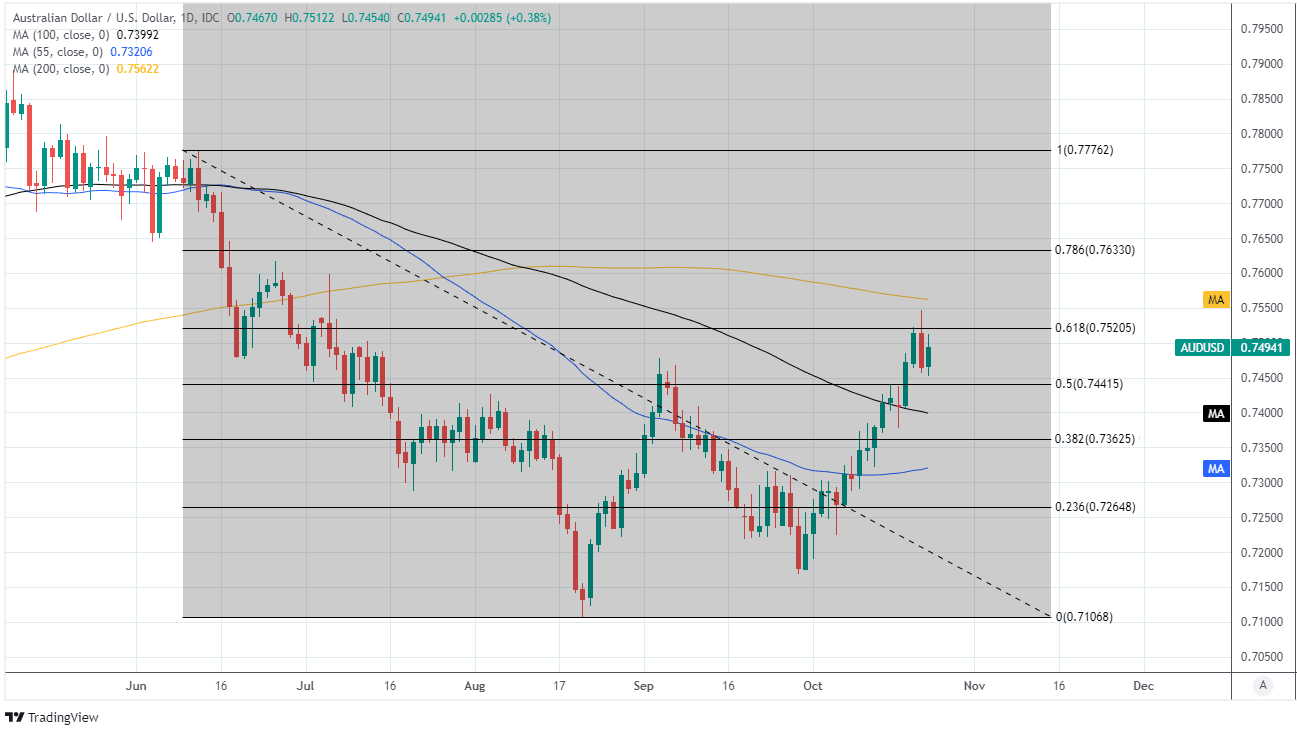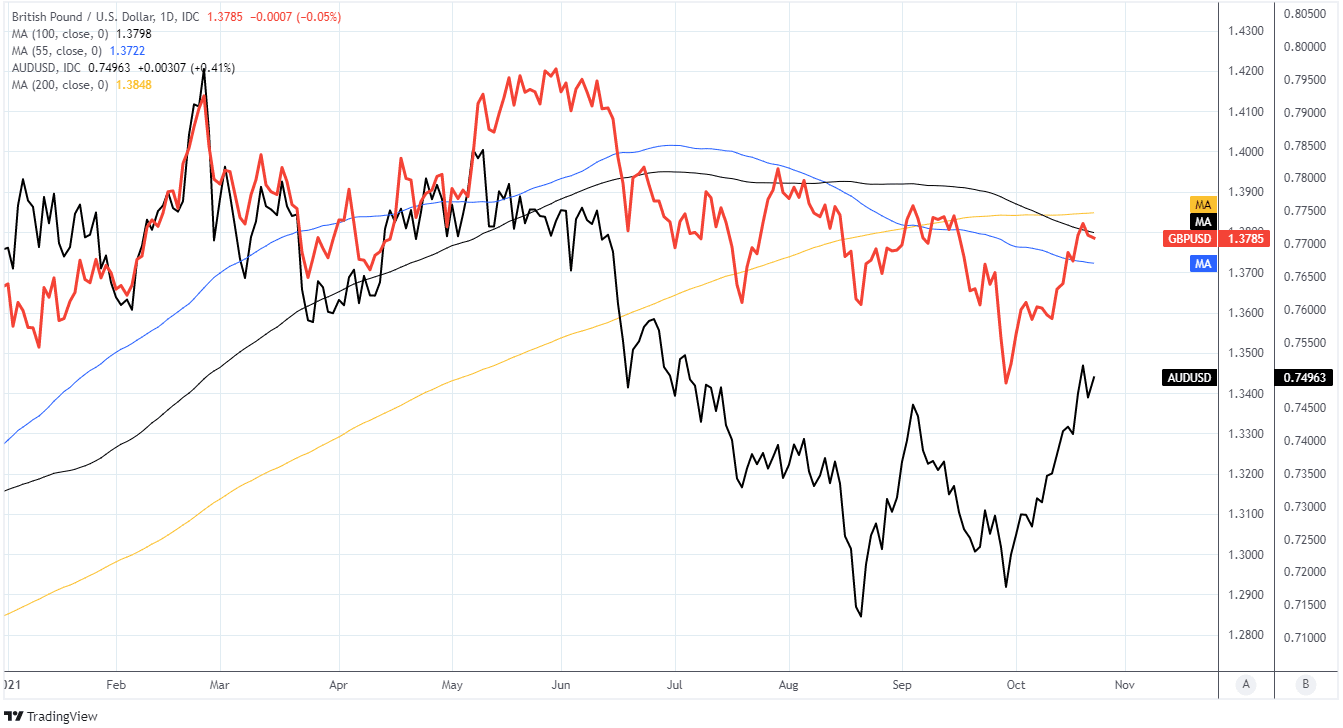Pound-Australian Dollar Correction Could Fade Near Major Supports Above 1.8250
- Written by: James Skinner
- GBP/AUD under pressure near three-month lows
- Eyes major chart supports between 1.83, 1.8250
- Correction could fade if AUD/USD’s rebound stalls
- USD, RBA policy & commodities key for AUD/USD

Image © Adobe Images
Spot Market Rate at Publication:
GBP/AUD: 1.8387
The Pound-to-Australian Dollar exchange rate slipped back toward three-month lows on Friday but a five week corrective downtrend could be unlikely to extend much below the nearby 1.8300 level unless the AUD/USD is able to find inspiration for a further recovery.
Pound Sterling plumbed the bottom of the major currency barrel on Friday after Office for National Statistics figures revealed a surprise fall in September retail sales, and as the currency market digested remarks from Bank of England (BoE) chief economist Huw Pill.
Pill confirmed in an interview with the FT that investors were right to suspect the BoE could seek to reverse the interest rate cuts of 2020 over the coming months due to risks posed to the bank’s medium-term inflation target, although he also may have left some in the market disappointed.
“We do not see, given the transitory nature of what we're seeing in inflation in our base case, a need to go to a restrictive (policy) stance,” Pill was also reported to have told the paper, indicating the market expectations of Bank Rate next year could be too high.
Prices in short-term interest rate markets have indicated increasingly in recent weeks that investors see Bank Rate rising from 0.1% to more than 1% before the end of next year, which do reflect expectations for exactly the “restrictive” stance of policy that chief economist Pill appeared to rule out.
Sterling was subsequently an underperformer on the day when edging lower by -0.05% against the U.S. Dollar, although it was the Australian Dollar that drove the bulk of GBP/AUD’s losses.
Above: Pound-Australian Dollar rate shown at daily interval. Closes in on its 200-day moving-average at 1.8308 and 61.8% Fibonacci retracement of 2021 uptrend, both of which could offer support to Sterling upon any further losses.
Secure a retail exchange rate that is between 3-5% stronger than offered by leading banks, learn more.
Australia’s Dollar outperformed all others in the G10 contingent of major currencies on Friday even after the Reserve Bank of Australia (RBA) pounced on Australia’s rising short-term bond yields in order to enforce its 0.10% yield target for bonds maturing in April 2024.
The RBA bought A$1BN of bonds in its first intervention for months in order to prevent Australian government bond borrowing costs following in the upward direction of those elsewhere in the world including in the U.S., UK and New Zealand.
“The yield dropped 6bps to 0.12% after the announcement. There is roughly A$12bn worth of April 2024 bonds left in the market now. The RBA’s dovish guidance is a headwind for AUD,” says Elias Haddad, a strategist at Commonwealth Bank of Australia.
Australia’s central bank has effectively said its interest rate is likely to remain at its current 0.1% until 2024 because it will likely take that long before wages rise by enough to reliably assure the 2.5% midpoint of the RBA’s two-to-three percent inflation target is delivered in a sustainable way.
“While Australia is not immune to many of the current price pressures playing out globally, the starting point for domestic inflation is much weaker,” says Alan Oster, group chief economist at NAB.
{wbamp-hide start}
{wbamp-hide end}{wbamp-show start}{wbamp-show end}
“NAB continues to see the RBA lagging the Fed, BoE and RBNZ in normalising rates as the impact of the pandemic fades,” Oster and colleagues wrote in a Friday research note.
Australia’s inflation rate had been below the RBA’s target for years and as a result the bank was already cutting interest rates long before the pandemic, hence why it’s reluctant to follow other central banks as they move toward a normalisation of its monetary policies
Many analysts have said as a result that they expect the Australian Dollar to underperform currencies like the U.S., New Zealand and Canadian Dollars as well as the Pound and a handful of other currencies over the coming months, although this was lost on the Aussie on Friday.
“The RMB rallied further vs the USD, alongside a bounce in local equities, after state media reported Evergrande had made a [previously] missed coupon payment on a USD-denominated bond. Separately, the PBoC added a net CNY90bln of liquidity for the third consecutive day,” says Stephen Gallo, European head of FX strategy at BMO Capital Markets, in a Friday note.
It’s possible that Friday’s buoyancy on Chinese and other Asian financial markets helped lift AUD/USD, which has a direct influence on GBP/AUD, which always closely reflects the relative performance of AUD/USD and GBP/USD.
Above: AUD/USD shown at daily intervals with major moving-averages and Fibonacci retracements of June decline. 61.8% Fibonacci retracement and 200-day average (yellow) could frustrate AUD/USD’s path higher.
While Asian buoyancy may have rubbed off on the antipodean currency this Friday the Aussie had also been an outperformer for the week overall, which BMO Capital Markets and the strategy team at Westpac see as related to a softer U.S. Dollar and an unwinding of speculative bets against the Aussie.
“We have seen another week of gains for risk-sensitive FX, with US$ on the back foot and US equities rebounding to near record highs. The equity recovery provided a solid tailwind for the Aussie and we should have seen some further fuel from unwinding of the sizeable short positions we have highlighted multiple times in recent weeks,” says Sean Callow, a Sydney based strategist at Westpac.
“Further broad US$ decline should see AUD/USD above the 200dma at 0.7565 but a period of consolidation seems overdue,” Callow said on Thursday.
AUD/USD rallied sharply throughout the week but what matters most for the Pound-Australian Dollar rate going forward is if AUD/USD manages to muster the impetus and momentum to get past the 200-day average loitering overhead at 0.7562 on Friday.
This would risk pushing the Pound-Aussie rate beneath the major support levels it was closing in on this Friday because the exchange rate would already trade down to 1.8250 if AUD/USD reached 0.7562 and if at the same GBP/USD proved unable to get above the 1.38 level it was testing on Friday.
Above: GBP/USD at daily intervals with major moving-averages and shown alongside AUD/USD.








